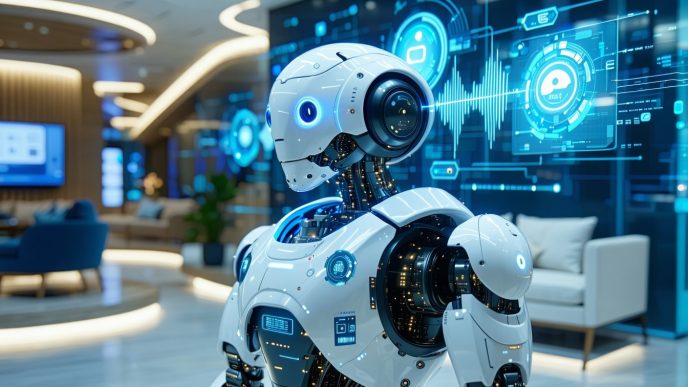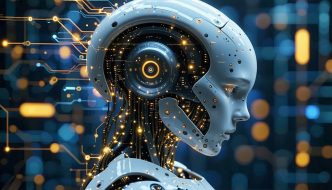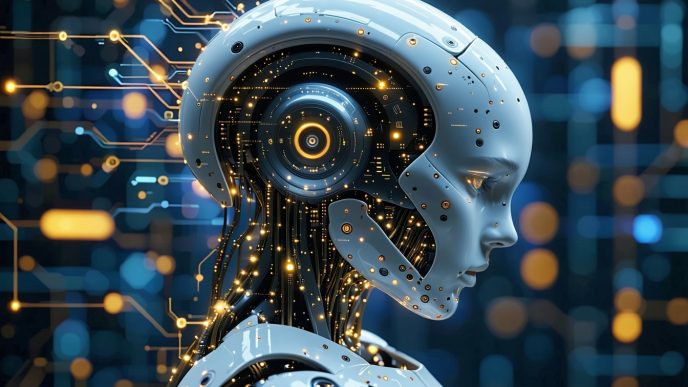Understanding Edge Computing
Definition and Basics of Edge Computing
Edge computing refers to a decentralized computing model that processes data closer to the data source rather than relying solely on a central data center. In this setup, devices such as sensors, gateways, and local servers perform computations at the “edge” of the network. This can significantly reduce the amount of data that must be sent to the cloud, leading to faster processing times and reduced bandwidth usage.
| Key Aspect | Description |
|---|---|
| Location of Processing | Data is processed locally at the edge device |
| Data Transfer | Minimizes the need to send large volumes of data to centralized data centers |
| Real-Time Capabilities | Provides immediate insights and actions |
With edge computing, humanoid robots can utilize real-time data to make decisions efficiently, significantly enhancing their operational effectiveness.
Connection to Real-Time Decision Making
The connection between edge computing and real-time decision-making is crucial for the functionality of humanoid robots. By processing data locally, robots can quickly assess their environment, interpret information, and respond accordingly without the delays associated with sending data to remote servers. This is particularly important in dynamic settings where immediate responses are necessary for safety and efficiency.
| Benefit | Impact on Decision Making |
|---|---|
| Reduced Latency | Information is processed in milliseconds, enabling swift actions |
| Autonomous Operation | Robots can execute tasks independently based on real-time data |
| Enhanced Interaction | Improved responsiveness leads to better engagement with users |
Smart humanoid robots, including models like Tesla Optimus Robot and Sanctuary AI Phoenix, leverage edge computing technologies to enhance their decision-making capabilities. By integrating edge computing, these robots can achieve a greater level of autonomy while maintaining high standards of performance.
In conclusion, edge computing is instrumental in supporting real-time decision-making processes in humanoid robots, ultimately leading to improved functionality and user experience. For more insights into humanoid robots’ capabilities and roles, see related articles on humanoid robots for home use and humanoid robot navigation.
Benefits of Edge Computing for Humanoid Robots
The integration of edge computing in humanoid robots brings substantial benefits that enhance functionality and performance. This technology allows robots to process data closer to where it is generated, leading to a range of advantages.
Increased Speed and Efficiency
Edge computing dramatically improves the speed and efficiency of humanoid robots. By processing data locally instead of relying on distant servers, the robots can make faster decisions. This real-time processing is crucial for applications where immediate responses are necessary, such as in healthcare or manufacturing environments.
| Benefit | Description |
|---|---|
| Local Processing | Reduces response times by handling data on-site. |
| Real-Time Decisions | Enables quick adjustments to tasks based on immediate data analysis. |
| Efficiency Gains | Minimizes bandwidth use and latency delays. |
Enhanced Data Security and Privacy
Data security is a critical concern in the development and deployment of humanoid robots. Edge computing helps enhance security by limiting the amount of sensitive data sent over networks. Keeping data processing localized reduces the risk of external breaches, ensuring that personal information remains protected.
| Security Aspect | Description |
|---|---|
| Reduced Data Transmission | Limits exposure of data to external networks. |
| Localized Compliance | Helps in meeting local data protection regulations. |
| Improved Control | Offers better control over data access and sharing. |
Improved Reliability and Redundancy
Reliability is vital for humanoid robots operating in dynamic environments. Edge computing increases the reliability of these systems by providing backup processing capabilities. Even in the event of network failures, robots can continue functioning independently. This redundancy is essential for tasks that cannot afford interruptions, such as elder care or assistance in high-stakes situations.
| Reliability Feature | Description |
|---|---|
| Continued Operation | Robots can function without constant network access. |
| Fault Tolerance | Local processing ensures backup in case of data loss. |
| System Resilience | Enhances the ability to adapt to unexpected changes. |
Integrating edge computing into humanoid robots not only enhances their operational capabilities but also supports the advancement of technologies that rely heavily on rapid processing and secure data management. Emphasizing these benefits can lead to more efficient designs and applications of these innovative machines in various sectors. For more insights on the impact of humanoid robots in different fields, consider exploring our articles on humanoid robots in healthcare and humanoid robots for home use.
Role of Edge Computing in Real-Time Decision Making
Edge computing plays a vital role in enhancing the capabilities of humanoid robots, particularly in the realm of real-time decision-making. By enabling local data processing and minimizing response times, edge computing allows robots to function efficiently in dynamic environments.
Processing Data Locally
One significant advantage of edge computing is its ability to process data locally, meaning that data collected from sensors and inputs can be analyzed on the robot itself rather than being sent to a centralized server. This capability is crucial for humanoid robots, as they often operate in unpredictable settings, requiring immediate analysis and action based on real-time data.
| Feature | Benefits |
|---|---|
| Local Data Processing | Reduces response time and enhances real-time decision-making capabilities. |
| Reduced Bandwidth Use | Minimizes the need for constant data transmission to the cloud. |
| Enhanced Privacy | Keeps sensitive data within the robot, increasing user trust. |
Minimizing Latency for Quick Responses
Latency is a critical factor in robotic operations, as even slight delays can lead to inefficiencies or mistakes in task execution. Edge computing minimizes latency by processing data closer to the source, which allows humanoid robots to respond rapidly to changes in their environment. This is particularly important in applications like healthcare and security, where swift actions can significantly influence outcomes.
| Aspect | Impact on Response Time |
|---|---|
| Edge Processing | Instantaneous data analysis leads to quicker robot reactions. |
| Improved Communication | Direct processing reduces the delay associated with data transfer. |
| Circumventing Internet Dependency | Local decision-making capabilities ensure functionality even during network outages. |
Supporting Autonomous Decision-Making
The integration of edge computing also supports the autonomous decision-making processes of humanoid robots. By leveraging local data processing, these robots can analyze their surroundings and make decisions without relying on external servers. This capability allows for more intuitive and independent actions, reducing the need for human intervention.
| Feature | Importance |
|---|---|
| Autonomy | Enables robots to function independently in complex tasks. |
| Machine Learning | Facilitates advanced algorithms that adapt based on local data inputs. |
| Adaptability | Improves performance in varied environments by enabling robots to learn in real time. |
As humanoid robots increasingly rely on edge computing, these capabilities enhance their effectiveness across numerous applications, including humanoid robots in healthcare and humanoid robots for companionship. Understanding the role of edge computing in real-time decision making provides insights into how these machines can operate more intelligently and safely.
Real-Life Applications of Edge Computing in Humanoid Robots
Edge computing enhances the capabilities of humanoid robots across various domains. By processing data closer to the source, these robots can respond to situations in real time, providing significant advantages in several application areas.
Healthcare and Assistive Robotics
In healthcare settings, humanoid robots equipped with edge computing capabilities can assist with patient monitoring and care. These robots can analyze vital signs, detect anomalies, and alert medical personnel immediately, ensuring timely interventions.
| Feature | Benefit |
|---|---|
| Local Data Processing | Quick response to patient changes |
| Real-Time Analytics | Enhanced accuracy in monitoring |
| Reduced Data Transmission | Minimized delays in care delivery |
For more insights into the intersection of humanoid robots and healthcare, see our article on humanoid robots in healthcare.
Manufacturing and Industrial Automation
In manufacturing environments, humanoid robots utilize edge computing to optimize production processes. They can monitor machine performance, predict maintenance needs, and make adjustments to operations on the fly, leading to increased efficiency.
| Application | Result |
|---|---|
| Machine Monitoring | Reduce downtime |
| Quality Control | Immediate identification of defects |
| Inventory Management | Accurate, timely stock assessments |
For an in-depth look at humanoid robots in industry, refer to our article on humanoid robots for daily chores.
Smart Homes and Personal Assistants
Humanoid robots in smart homes benefit from edge computing by enabling seamless interaction with home automation systems. They can process data from various sensors and control devices, allowing for responsive and adaptive environments tailored to user preferences.
| Function | Example |
|---|---|
| Smart Automation | Regulating temperature based on preferences |
| User Interaction | Recognizing voice commands for personalized assistance |
| Security Monitoring | Immediate alerts for security breaches |
For further details about humanoid robots in residential settings, check out our article on humanoid robots in smart homes.
Edge computing plays a pivotal role in enhancing the functionality and efficiency of humanoid robots across these real-life applications. From healthcare to manufacturing and smart living, the integration of local data processing allows for more effective and reliable robotic systems.
Challenges and Considerations
Incorporating edge computing into humanoid robots presents various challenges that need to be carefully addressed to optimize their functionality and safety. Below are some critical factors that must be considered.
Data Storage and Management
With edge computing, data is processed closer to the source, reducing the need for sending large quantities of information to centralized data centers. However, effective data storage and management become essential to ensure that relevant information is readily available for real-time decision-making.
| Challenge | Description |
|---|---|
| Volume of Data | Humanoid robots generate large volumes of data that must be stored efficiently. |
| Storage Solutions | Deciding between local storage or cloud integration poses questions about accessibility and speed. |
| Data Retention Policies | Establishing how long to retain data for analysis without overwhelming storage capabilities is crucial. |
Network Connectivity and Infrastructure
Edge computing relies on a robust network infrastructure to facilitate communication between the humanoid robots and the data processing units. A consistent and high-speed internet connection is necessary to ensure seamless operations, particularly in environments where robots require immediate responses.
| Challenge | Description |
|---|---|
| Connectivity Issues | Intermittent network connections can hinder the performance of humanoid robots. |
| Infrastructure Costs | The need for upgraded infrastructure can lead to significant investment requirements. |
| Compatibility | Ensuring that existing network systems can support new edge computing technologies is essential. |
Security and Privacy Concerns
The integration of edge computing in humanoid robots introduces several security and privacy challenges. Protecting sensitive data while allowing for real-time analytics is critical to user confidence and compliance with regulations.
| Challenge | Description |
|---|---|
| Data Breaches | High vulnerabilities exist for unauthorized access to sensitive information. |
| Privacy Regulations | Compliance with local and international privacy laws is necessary to protect user data. |
| Secure Communication | Implementing robust security measures to safeguard communication channels between robots and data sources is vital. |
Addressing these challenges effectively is essential for advancing humanoid robots and edge computing and ensuring that they operate efficiently and securely in their environments.
Future Trends and Developments
The field of humanoid robots continues to evolve, with edge computing playing a vital role in enhancing their capabilities. Future trends focus on advancements in technology, integration with artificial intelligence, and the potential impact on the robotics industry.
Advancements in Edge Computing Technology
The development of edge computing technology aims to enhance data processing, storage, and analysis capabilities within humanoid robots. Key advancements include:
| Advancement | Description |
|---|---|
| Improved Processing Power | Increased computing capacity at the edge enables faster data processing, allowing robots to make real-time decisions without relying on cloud computing. |
| More Efficient Energy Use | Innovations in power management lead to longer battery life for humanoid robots, enhancing their operational efficiency. |
| Enhanced Connectivity Protocols | Advances in network connectivity establish more reliable communication between robots and devices, leading to streamlined operations. |
These developments ensure that humanoid robots can operate efficiently in various environments, such as homes or workplaces.
Integration with Artificial Intelligence
The convergence of edge computing and artificial intelligence (AI) holds significant promise for humanoid robots. Integrating AI with edge computing enables robots to:
| Integration Aspect | Benefit |
|---|---|
| Real-Time Learning | Robots can process and learn from data instantly, improving their adaptability and performance in dynamic environments. |
| Enhanced Interaction | AI models allow for more natural communication and interaction with humans, making robots more approachable and user-friendly. |
| Improved Decision-Making | With AI algorithms running locally, robots can analyze situational data swiftly, enhancing their decision-making capabilities. |
For further exploration of AI models in humanoid robots, refer to our article on ai models in humanoid robots.
Potential Impact on Robotics Industry
The ongoing development of humanoid robots that utilize edge computing is set to transform various sectors. The anticipated impacts include:
| Industry | Potential Impact |
|---|---|
| Healthcare | Humanoid robots could assist in elderly care, surgical procedures, and patient management within healthcare settings. For more details, read about humanoid robots in healthcare. |
| Home Automation | Advanced humanoid robots can significantly enhance smart homes, performing tasks such as cleaning and companionship. Check out our insights on humanoid robots in smart homes. |
| Education | Robots equipped with real-time processing capabilities can create immersive learning experiences, especially in classrooms. |
This growth in the robotics industry highlights the importance of ongoing research and development, particularly focusing on the integration of edge computing and AI technologies in humanoid robots.














